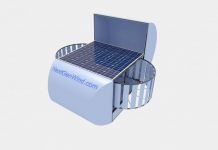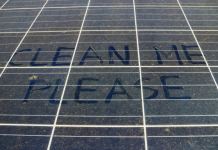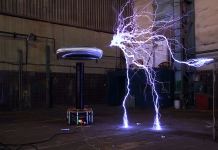Trackers for solar power plants is a device which tracked the Sun and focused design so that the solar battery had the highest efficiency. Tracker just works, the sensors detect the best position of the solar panels, and a servo motor rotates the battery in a desired position.
Trackers are of two types:
1. Static, not very often used, since it is inferior in its characteristics.
2. Dynamic, the most popular system today. These systems allow maximum use of solar energy. Maximum power generation occurs when the solar cells perpendicular to sunlight.
If you compare the performance of the mobile and fixed modules, the first may increase the production of electricity up to 25 – 30% per year.
Solar panels installed on a mobile tracker, automatically during the day, change your location and move behind the sun, and depending on what time of year automatically change the tilt angle.
Control system trackers of different, is divided into three types:
1. Active orientation to maximum solar illumination is produced by means of the sensor. In comparison with static traceray efficiency higher than 49%.
2. Passive. Panels are guided by the solar calendar, and the efficiency of their higher in comparison with static systems at 39%.
3. Combined. It greatly increases the robustness of the active type, as in the case of some faults is entering passive mode.
Trackers come in different configurations due to different drivers and choose the direction by means of different algorithms. But basically there are two types of configuration:
1. Uniaxial. This is the simplest configuration. They have one degree of freedom, it is also the axis of rotation, which focuses on North Meridian. However, if you use auxiliary device, the structure can be oriented in any coordinates. Uniaxial happen with different orientation of the axis of rotation: horizontal, vertical, inclined and polar.
2. Biaxial. Have two degrees of freedom, they also act as the rotation axes. The axis work together, but are completely unrelated. One acts as the master axis and another as secondary. The main axis may be the one that is fixed relative to the earth. Biaxial trackers are divided into types according to the direction of the primary axis relative to the earth. Here there are two types of implementations are, and AADAT. Biaxial tracker requires a minimum of care, and it auto running. Their efficiency is 30% more than single axis.
The design of the tracker needs to give the ability to withstand strong winds. Therefore, with the increase of the size of the solar array increases in proportion to the windage of the whole structure, and, consequently, the load on the tracker. To overcome this, the load on the tracker is redistributed, and increasing overall dimensions of the whole structure. This achieves maximum reliability.























